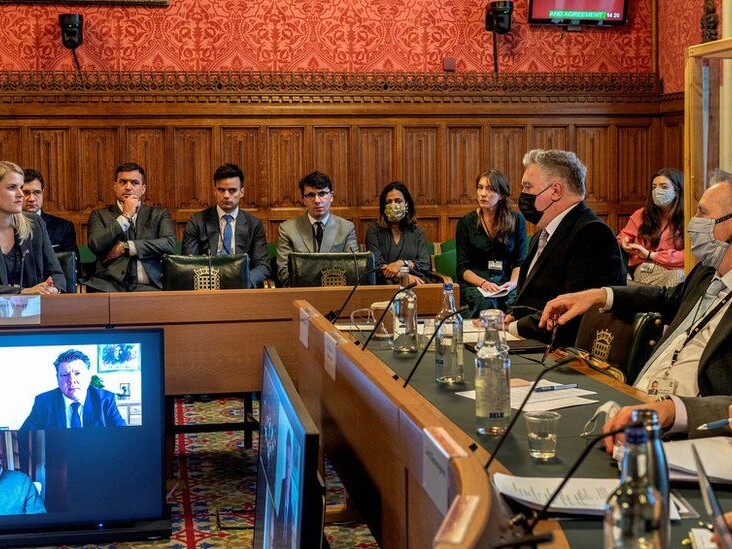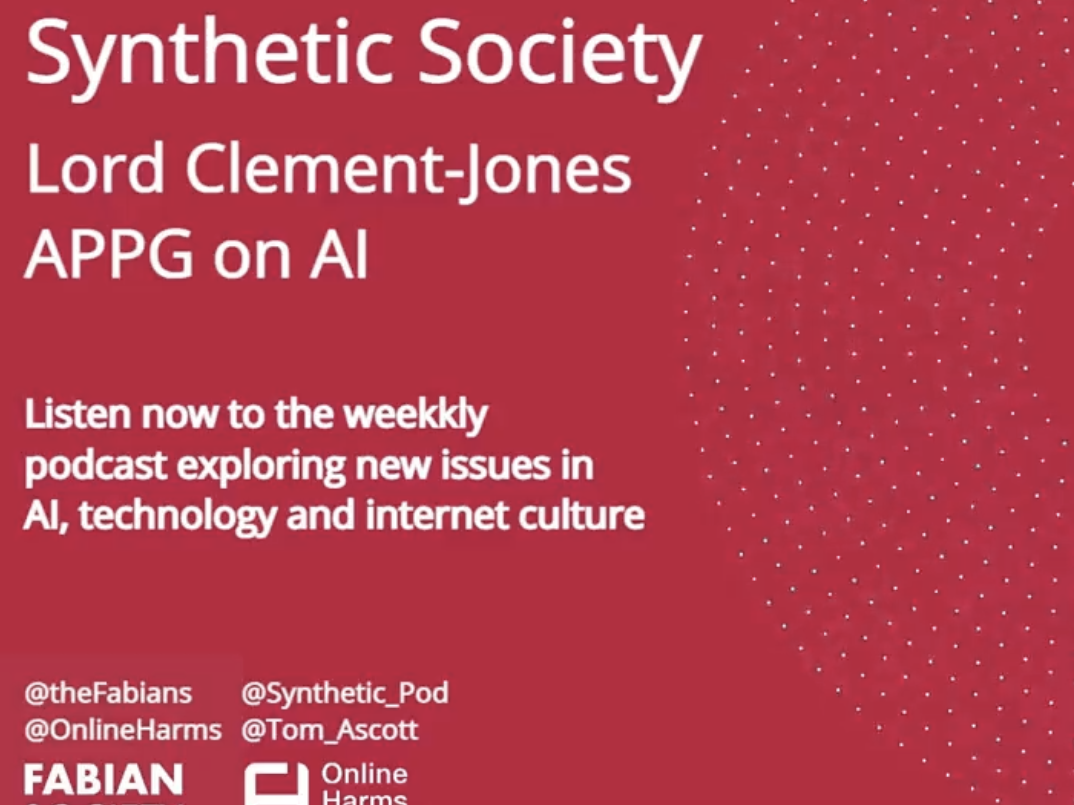During recent debates during the passage of the Health and Scare Bill I helped move amendmendments designed to end the confusion on the use and sharing of Health Data. The complications involved in using health data for public benefit and the lack of public engagement has led to a massive loss of trust. The transfer of health data responsibilities to NHS England from NHS Digital without proper consultation and the GP data opt out fiasco are a particular examples of how public trust can be lost. The review by Profressor Ben Goldacre has recognized this and I hope will lead to a much more comprehensive and clear framework for the protection and use of health data.
The first debate was on the subject of digital transformation of the health service generally
I start by warmly thanking the noble Lord, Lord Hunt of Kings Heath, for allowing me to speak to and lead on this set of amendments, to which his is the leading name. By the same token, I am delighted to see that he is now back in his place and able to advocate much more knowledgeably than I can the merits of the amendments in this group, which relate to the digital aspects of the NHS and the importance of digital transformation in the health service. They are designed to ensure that a digital transformation duty is set out, five-year plans are made, digital issues are high up on the agenda of the ICBs, and progress in this area is assessed and reported on.
I am sorry that I was not able to contribute at Second Reading on digital or data matters. However, as Chris Hopson, chief executive of NHS Providers, said in his Observer piece two Sundays ago,
“we need a national transformation programme that embeds modern technology, 21st century medicine, integrated care closer to home and much greater emphasis on prevention at the heart of our health and care system.”
There is huge potential for technology to help health and care professionals to communicate better and to enable people to access the care they need quickly and easily when it suits them. Quite apart from its impact on planning and administration, the technology, as the NHSE digital transformation website emphasises, goes all the way from ambulance iPads through fitness apps to digital home care technology. It ranges from websites and apps that make care and advice easy to access wherever you are to connected computer systems that give NHS staff the test results, history and evidence they need to make the best decisions for patients.
As the recent Wade-Gery report points out:
“Digital technology is transforming every industry including healthcare. Digital and data have been used to redesign services, raising citizen expectations about self-service, personalisation, and convenience, and increasing workforce productivity.”
It says that the NHS should be in the vanguard. It goes on to say:
“The pandemic has accelerated the shift to online and changed patient expectations and clinical willingness to adopt new ways of working.”
It also says that
“the vaccine programme, supported by so many brilliant volunteers and staff, was only possible through the use of advanced data analytics to drive the risk stratification, population segmentation and operational rollout.”
However, the review also says:
“The need is compelling. The NHS faces unprecedented demand and severe operational pressure as we emerge from the coronavirus pandemic, and we need new ways of working to address this. Now is the moment to put data, digital and technology at the heart of how we transform health services … Effective implementation will require a significant cultural shift away from the current siloed approach in the centre with conscious management to ensure intentions translate to reality … This system leadership should be responsible, in a partnership model between the centre and ICSs, for setting out the business and technology capability requirements of ICSs and the centre with the roadmaps to realise these, and for determining the appropriate high level technical standards, and blueprints for transformed care pathways.”
I have quoted the Wade-Gery review at length but the What Good Looks Like framework set out by NHSX last year is an important document too, designed as it is to be used to accelerate digital and data transformation. It specifies in success measure 1:
“Your ICS has a clear strategy for digital transformation and collaboration. Leaders across the ICS collectively own and drive the digital transformation journey, placing citizens and frontline perspectives at the centre. All leaders promote digitally enabled transformation to efficiently deliver safe, high quality care. Integrated Care Boards (ICBs) build digital and data expertise and accountability into their leadership and governance arrangements, and ensure delivery of the system-wide digital and data strategy.”
Wade-Gery recommends, inter alia, that we
“reorientate the focus of the centre to make digital integral to transforming care”.
In the light of all this, surely that must apply to ICBs as well.
We need to adopt the measures set out in the amendments in this group; namely there should be a director of digital transformation for each ICB. ICBs need clear leadership to devise, develop and deliver the digital transformation that the NHS so badly needs, in line with all the above. There also needs to be a clear duty placed on ICBs to promote digital transformation. It must be included as part of their performance assessment—otherwise, none of this will happen—and in their annual report..
The resources for digital transformation need to be available. Capital expenditure budgets for digital transformation must not be raided for other purposes and digital transformation should take place as planned. It is clear from the Wade-Gery report that we should be doubling and lifting our NHS capital expenditure to 5% of total NHS expenditure, as recommended by the noble Lord, Lord Darzi, and the Institute for Public Policy Research back in June 2018. We should have done that by June 2022 to accord with his recommendations but we are still suffering from chronic underinvestment in digital technology. Indeed, what are the Government’s expenditure plans on NHS digital transformation? We should be ring-fencing the 5% as firmly as we can. As Wade-Gery says:
“NHSEI should therefore as a matter of urgency determine the levels of spend on IT across the wider system and seek to re-prioritise spend from within the wider NHSE budget to support accelerated digital transformation.”
It adds up to asking why these digital transformation aspirations have been put in place without willing the means.
I am also mindful of the other side of the coin of the adoption of digital transformation: there needs to be public information and engagement.
Our amendments are designed to ensure the provision of information about the deployment of treatments and technology as part of ICBs’ patient involvement and patient choice duties. Without that kind of transparency, there will not be the patient and public trust in the NHS adoption of digital technology that is needed. Rightly, success measure 1 of the NHSX What Good Looks Like framework includes that an ICS should, inter alia,
“identify ICS-wide digital and data solutions for improving health and care outcomes by regularly engaging with partners, citizen and front line groups”.
Success measure 5, titled “Empower citizens”, says:
“What does good look like? Citizens are at the centre of service design and have access to a standard set of digital services that suit all literacy and digital inclusion needs. Citizens can access and contribute to their healthcare information, taking an active role in their health and well-being.”
So in the NHS’s view the engagement and provision of information about the deployment of new technologies is absolutely part of the delivery of a digital transformation strategy.
In essence, the amendments would enshrine what is already there in Wade-Gery and best practice guidance where it relates to digital technology and transformation. We should be making sure that our NHS legislation is fully updated in line with that report and with the guidance on what success looks like for the digital age. I hope the Minister agrees to take the amendments on board, and I look forward to hearing his reply.
The second two committee debates were specifically on health data
These amendments relate to the abolition of the Health and Social Care Information Centre and the implications for the integrity of patient data. Clauses 88 and 89 give the Secretary of State powers through regulations to transfer a function from one relevant body to another, and the relevant bodies are defined as Health Education England, the Health and Social Care Information Centre, the Health Research Authority, the Human Fertilisation and Embryology Authority, the Human Tissue Authority and NHS England. Other than NHS England, each of those bodies can be abolished under the clause as the result of a transfer of functions.
Clause 88 provides for the abolition of the Health and Social Care Information Centre. The Government have announced that they will be using the powers in that clause to merge NHS Digital to form part of the new transformation directorate within NHSE, and of course we have seen that NHSX has now been abolished and the relevant personnel have moved into the transformation directorate. The Health and Social Care Information Centre is an executive non-departmental public body created by statute, usually known by the term “NHS Digital”. This amendment, which would prevent that from happening to the HSCIC, is designed to ensure that NHS Digital continues as an entity to safeguard patient data. The merger of NHS Digital with NHSE risks losing the skills and experience that currently sit within NHS Digital. I have mentioned that NHSX has ceased to exist.
There are two risks for patients. One is that important knowledge and skills will be lost as talented people leave the organisation and time is devoted to the nuts and bolts of making the organisation function rather than on achieving its aims. The other is that the new merged organisation will just be too big and unwieldy to respond in an agile way to major challenges such as workforce planning and digital innovation. If NHSE leaders understand how important these challenges are then they will be able to prioritise them and make them part of the organisation’s core function.
I turn to the functions of the statutory safe havens in relation to Clause 89. Part 9 in Chapter 2 of the Health and Social Care Act 2012 lays out the functions and obligations of what is described as the statutory safe haven for patient data from across the health and social care system required for the production of national statistics and for commissioning, regulatory and research purposes, in addition to supporting patient care. Amendment 228 seeks to keep these statutory protections in place and ensure that NHS England does not take on that responsibility, because of a potential conflict of interest in its role.
The bottom line is that we need to retain NHS Digital’s statutory safe haven functions separate from NHS England. As the BMA has said, it is of the utmost importance to retain a quasi-autonomous body for the purposes of collecting, storing and distributing sensitive patient data—something that would be lost under a merger of NHSD and NHSE.
There is one other major advantage of keeping NHS Digital as the digital safe haven. The statutory safe haven’s legal name is the Health and Social Care Information Centre, so there is some obligation to social care. NHSD has always given some thought to integration, even when there was very little on the social care side to integrate with, and little interest from NHSE in doing that work itself. If it all gets merged into NHSE then how will the obligation to collect social care data continue to exist, since NHSE’s responsibility is to the NHS? If this transfer of functions takes place, who will be responsible for the national collection of social care data? Each bit of the social care world will see NHSE as a different entity from NHS Digital. What are the Government’s joining-up plans in respect of the future governance of this kind of data? I beg to move.
I take this opportunity to come back to the Minister to add a query about the data governance regime which he has described this evening and into which we dipped our toe with the last group of amendments. My noble friend anticipated me in discussing the White Paper, which, in turn, follows from the Data Saves Lives draft strategy. I hope we will have the opportunity to meet the Minister to discuss this further because it is a very complex area.
I want to add to that conversation the fact that we variously have IGARD, CAG and the National Data Guardian for Health and Care—as well as NHS Digital, which we hope will remain separate, but we will come to that shortly. We have all these different bodies, but we need a simple regime which helps us understand, for instance, whether the Minister will say, “Yes, it’s already happening”, to the noble Baroness, Lady McIntosh, or, “No, it’s not going to happen.” I could not tell you the answer to that question in my current state of knowledge about the ability to transfer information across the health service and internationally.
There is a balance to be struck between the established protections and new provisions which might expedite the development of access to new and improved treatments and technologies—but it must be done in a safe way. I hope that, between Committee and Report, the Minister will take the opportunity to ensure that we have all the information we need on plans to perform a so-called reset of or new direction for—or however he might like to describe it—the NHS’s use of our health data.
At Report Stage we made some progress
I thank the Minister for his engagement, both on the Floor of the House and in extensive correspondence. This has been really quite a complicated trail. I feel as though we have been in a maze where we have had to follow a bit of string, finding the way through into data governance in the NHS.
We have had to follow certain key principles, which we all share and which the Minister has expressed, including the protection of privacy, the right of opt-out, the value of health data and, above all, the imperative to retain public trust. Given the importance of the new ICB regime, I very much hope that the Minister will be able to comprehensively answer my noble friend’s questions.
But if we have taken the time to get to this point of really understanding—or beginning to understand—the kind of data governance that the ICBs will be subject to, it raises the question of what future guidance will be in place. I very much hope that the Minister can absolutely give us the assurance that there will be new, clear guidance, along the lines I hope he is going to express in response to my noble friend, as soon as possible, especially given the speeding up of the electronic patient record programme, as my noble friend Lady Brinton said. That is, of course, desirable, but it has to be done in a safe manner.
The Minister in his letter—which the noble Lord, Lord Hunt, addressed in his response—seemed a bit affronted that we should raise the credentials of NHSEI as a holder and protector of NHS data. I would refer to the BMJ letter, which I think came online yesterday, from Kingsley Manning, a former chair of NHS Digital. He really does set it all out. I shall not go into great detail but, for instance, he says that merging NHS Digital with NHSE
“is an important and retrograde step.”
Your Lordships may dispute this, but from where he sat this is important. He said:
“In my experience the general approach of NHS England, including of its clinicians, was that much of the guidance and regulations with respect to the use of patient” data “was seen as unnecessary”. That is a pretty big statement and a fairly damning verdict from the former chair of NHS Digital. I do not think that the Minister can simply remedy the situation by assurances, so I support the amendment in the name of the noble Lord, Lord Hunt, and if it is put to a vote, I very much hope that the House will support it.
Finally, whether or not these amendments are pressed, I hope that the Minister will reconsider whether the Goldacre review should be published before the final version of the new NHS data strategy, Data Saves Lives. I welcome the fact that the Goldacre review is going to deal with information governance, but it is important that we should see that before the final version of Data Saves Lives.
Later when the Bill came back to the Lords but before the Golacre review was published I acknowledged that the Government had promised action
My Lords, briefly, I support the remarks of the noble Lord, Lord Hunt, regarding Motions F and F1. He, assisted by my noble friend Lady Brinton and I, has pursued the question of the future of data governance in the NHS with great determination and persistence. I pay tribute to him and to medConfidential in that respect. I know that the Minister, the noble Lord, Lord Kamall, is equally determined to make sure that data governance in the new structures is designed to secure public trust. I very much hope that he will give the assurances sought by the noble Lord, Lord Hunt.
The key problem we identified early on was the conflict of interest referred to by the noble Lord, Lord Hunt, with NHS England in effect marking its own homework, and those who have data governance responsibility reporting directly to senior managers within the digital transformation directorate. I hope that the assurances to be given by the Minister will set out a clear set of governance duties on transparency of oversight, particularly where NHS England is exercising its own statutory powers internally. I look forward to what the Minister has to say






